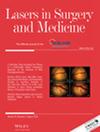Expert Consensus on Clinical Recommendations for Fractional Ablative CO2 Laser, in Facial Skin Rejuvenation Treatment
Abstract
Background
For three decades, fractional ablative CO2 lasers have been used for skin rejuvenation. With breakthroughs in laser technology and expanding popularity, new recommendations and suggestions arise on a regular basis.
Objective
To develop up-to-date clinical recommendations on safety measures, therapeutic framework, and techniques to improve treatment outcomes.
Methods
Using Google Forms, a questionnaire with 188 questions was given to a varied sample of 21 dermatologists and plastic surgeons from various countries and practice contexts. A second questionnaire with 11 items was created to resolve any gaps or discrepancies.
Results
Active face infections are considered a treatment contraindication by 95% of panelists. Burns, recent sun exposure, and pregnancy or breastfeeding were also considered contraindications (according to 67% of panelists). Over 90% employ bacterial and viral prophylaxis, however the majority (67%) do not prescribe antifungal prophylaxis. The most often stated anesthetic treatments by panelists are topical anesthetic cream, nerve blocks, and oral analgesics (according to 95%, 81%, and 62% of panelists respectively). Over 90% of panel members suggested treatment setting alterations for individuals with Fitzpatrick skin types III–IV. Following reepithelization, which happens between 8 and 42 days after the treatment, the majority (76%) of panelists advocate continuing standard skin care routines including active ingredients. Eighty-one percent of panelists recommend using supplementary treatment to maximize results. Supplementary treatment recommendations included use of neuromodulators (76% of panelists), Intense Pulsed Light Therapy treatments pre and postprocedure (61% of panelists), and injection-based therapies such as (Hyaluronic Acid fillers, and biostimulatory fillers) (recommended by 48% of panelists). 60% of panelists perform FACL to improve skin laxity treatment in nonfacial areas and adjust their settings accordingly.
Limitations
Our results reflect only a modest panel size; with a focus on a specific device. Although experienced, the small number of panelists, recommendations, and personal adverse reactions encounters for resurfacing indication, might be biased.
Conclusion
Fractional CO2 laser is a popular and effective skin rejuvenation treatment with minimal downtime and side effects. This study presents new therapy recommendations to resolve treatment uncertainty and provide complete care suggestions for best results.


 求助内容:
求助内容: 应助结果提醒方式:
应助结果提醒方式:


